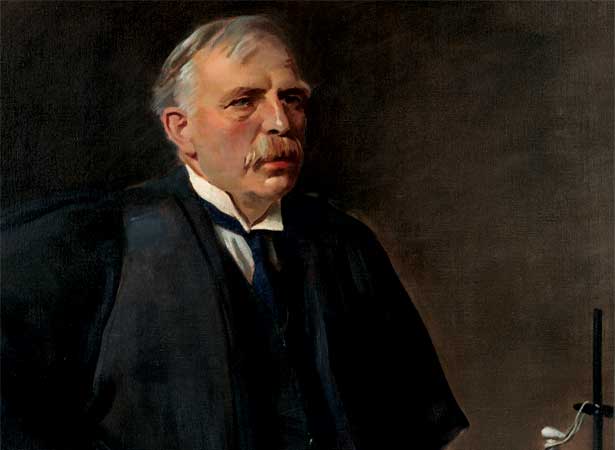
Ernest Rutherford’s discoveries about the nature of atoms shaped modern science and paved the way for nuclear physics. Albert Einstein called him a ‘second Newton’ who had ‘tunnelled into the very material of God’.
Born in 1871 near Nelson, Rutherford was to claim that his inventiveness was honed by the challenges he faced working on his parents’ farm: ‘We haven’t the money, so we’ve got to think’.
After gaining three degrees at Canterbury University College, Rutherford won a scholarship to the Cavendish Laboratory at the University of Cambridge, of which he was to become director many years later. While at Cambridge, he became known for his ability to make imaginative leaps and design experiments to test them.
From 1898 to 1907 Rutherford was a professor at McGill University in Montreal, Canada. In collaboration with Frederick Soddy, he discovered that heavy atoms have a tendency to decay into lighter atoms. This achievement heralded modern techniques of carbon dating and won Rutherford the 1908 Nobel Prize in Chemistry.
The second great discovery of his career was made at Victoria University of Manchester in 1909. With the help of experiments by assistants Hans Geiger and Ernest Marsden, Rutherford found that the atom consisted of a tiny, dense nucleus surrounded by oppositely charged electrons – a model that still forms the basis of atomic theory.
In 1917 Rutherford made his third and perhaps most famous breakthrough. While bombarding lightweight atoms with alpha rays, he observed outgoing protons of energy larger than the incoming alpha particles. He correctly deduced that the bombardment had converted nitrogen atoms into oxygen atoms. He had successfully ‘split’ the atom, ensuring his lasting scientific fame.
On what was to be his last trip to New Zealand in 1925, Rutherford lectured to packed halls around the country. His call for government support for education and research helped establish the Department of Scientific and Industrial Research the following year.
Public acclaim continued after his death in 1937. Buildings and streets in a number of countries bear his name, and his image has appeared on commemorative stamps, and, since 1992, New Zealand’s $100 banknote. He is the only New Zealander to have a chemical element – rutherfordium – named in his honour.
Read more on NZHistory
Ernest Rutherford stamp – Men and their moustachesErnest RutherfordErnest Rutherford memorial, Brightwater – Nelson memorialsRutherford - Pickering memorial, Havelock – Marlborough memorials
External links
How to cite this page
'Rutherford wins Nobel Prize', URL: https://nzhistory.govt.nz/ernest-rutherford-wins-nobel-prize-in-chemistry, (Ministry for Culture and Heritage), updated 26-Oct-2021
